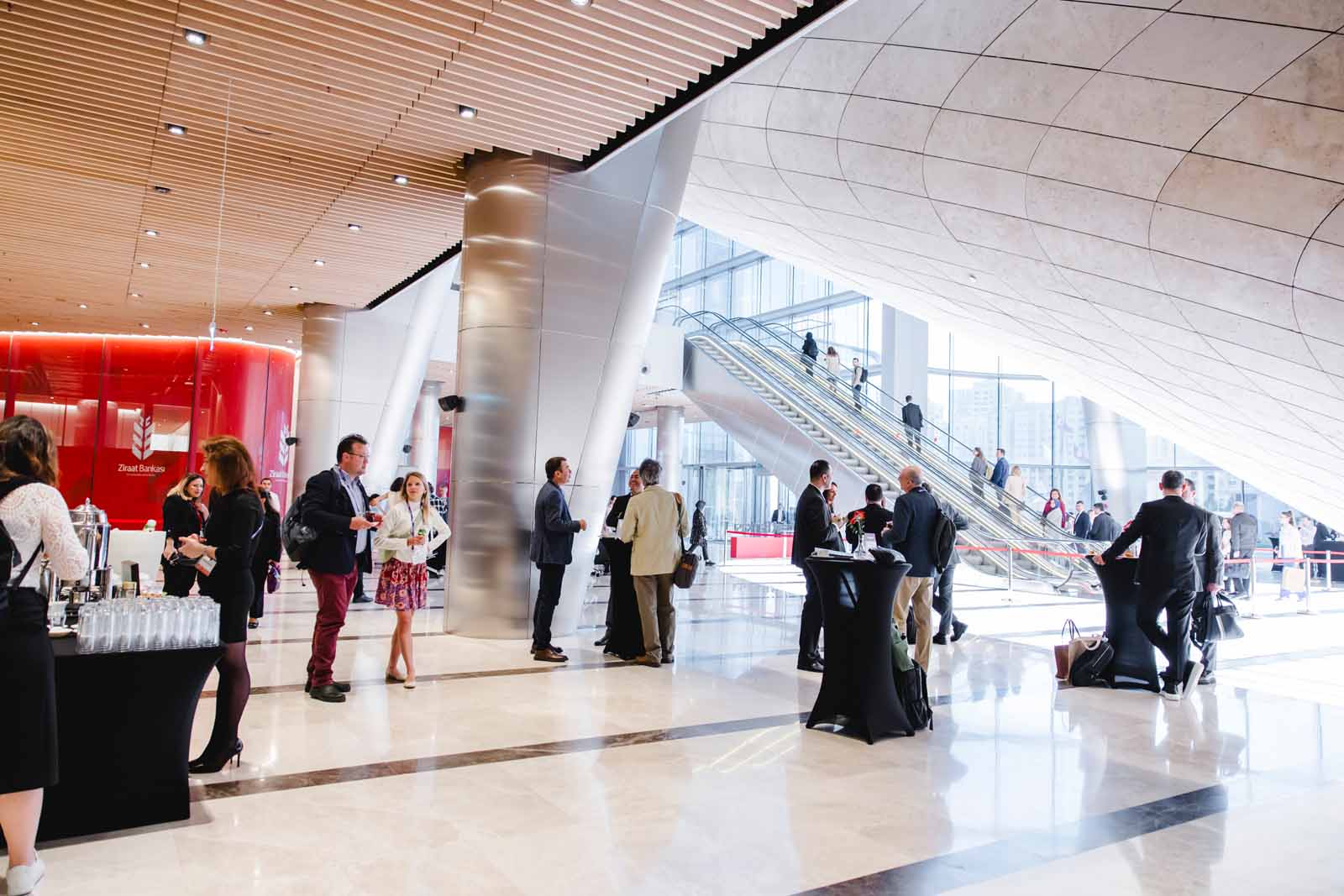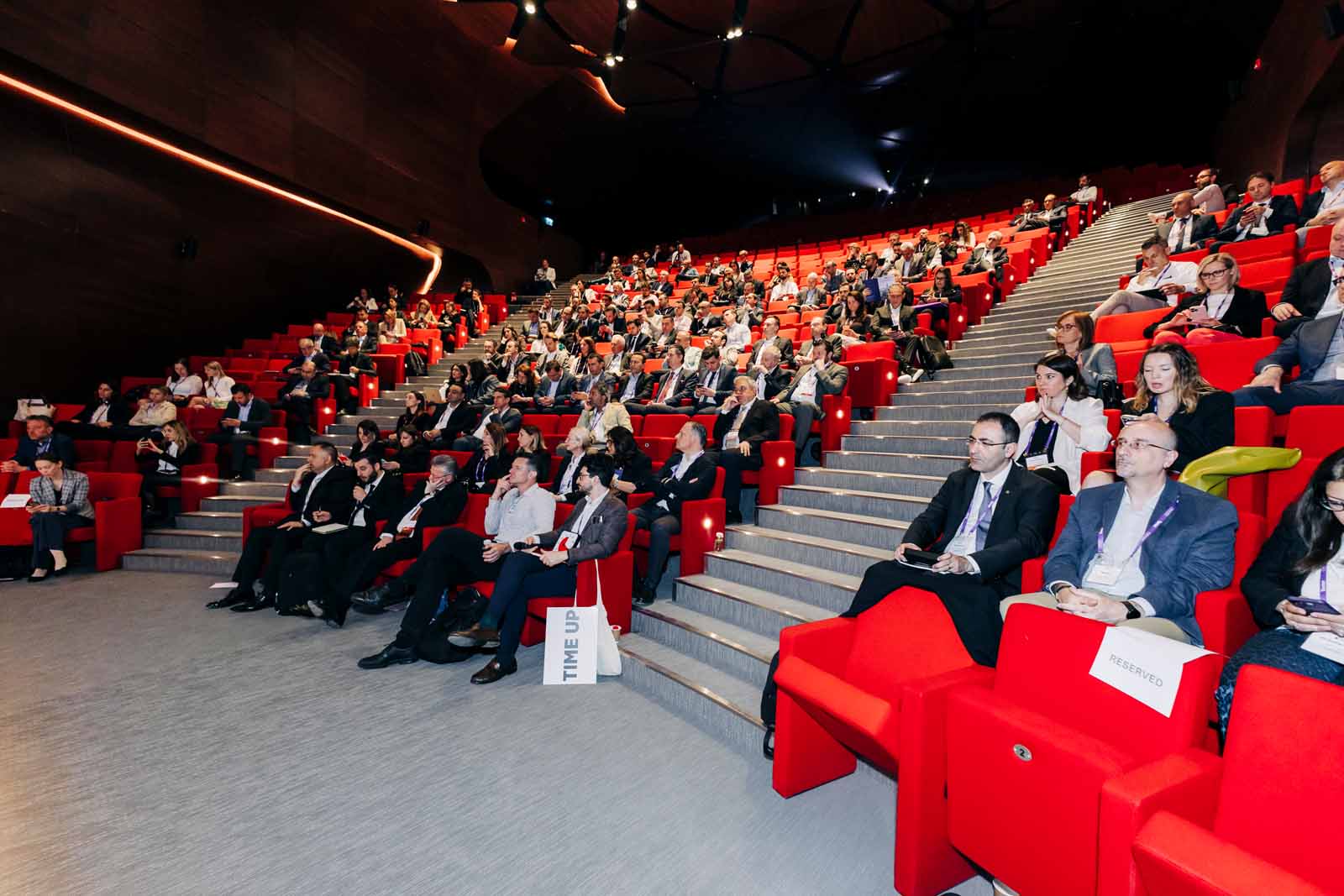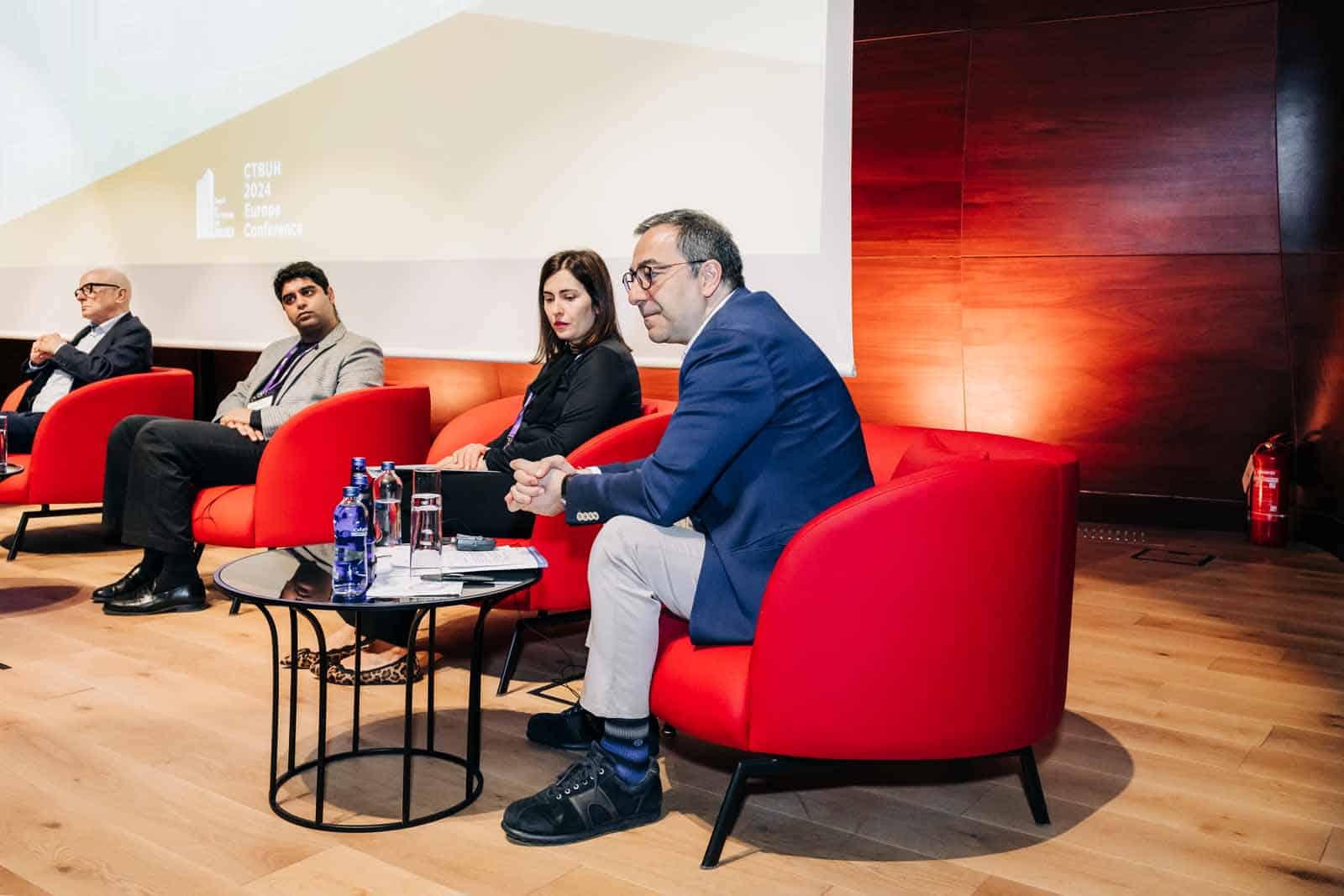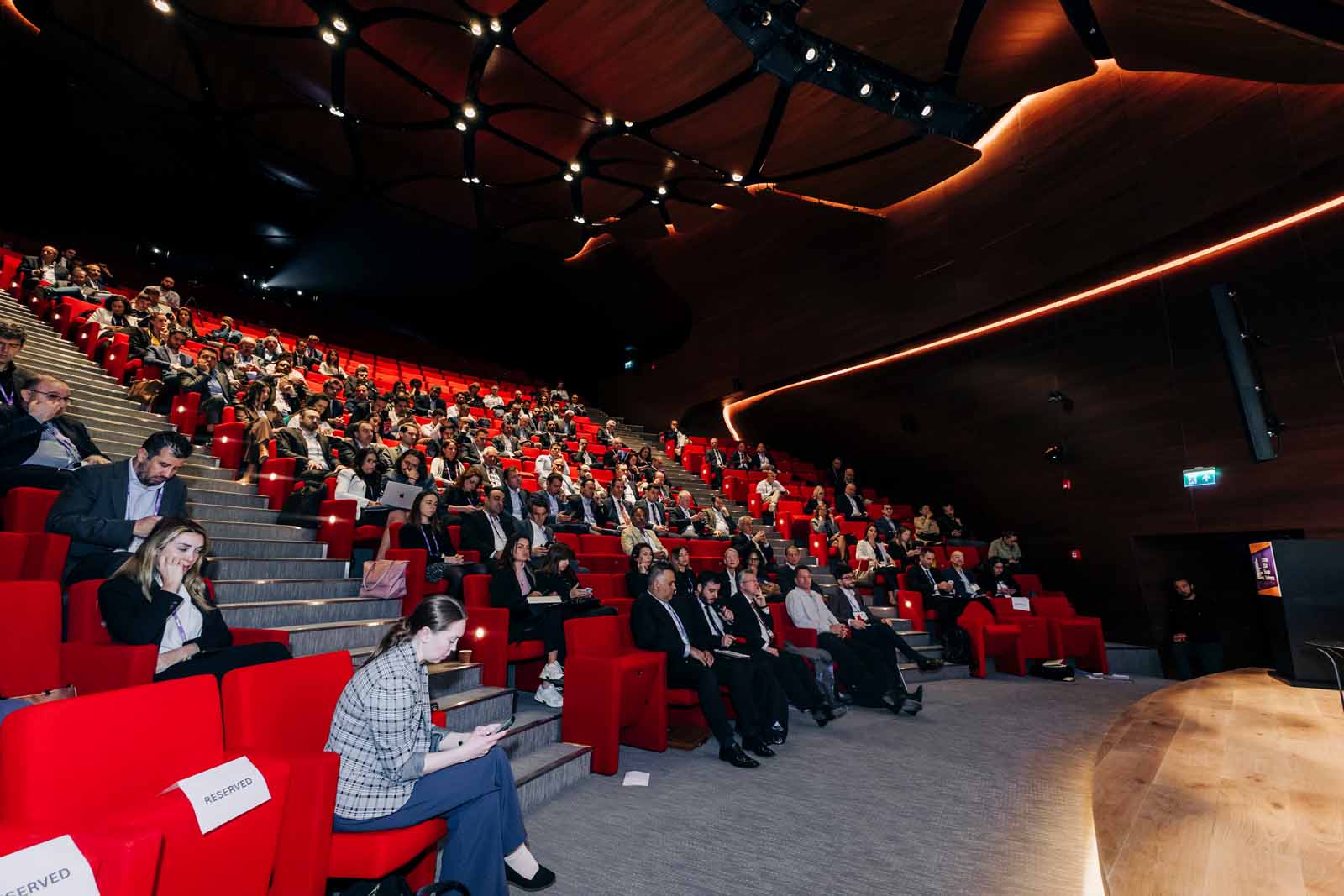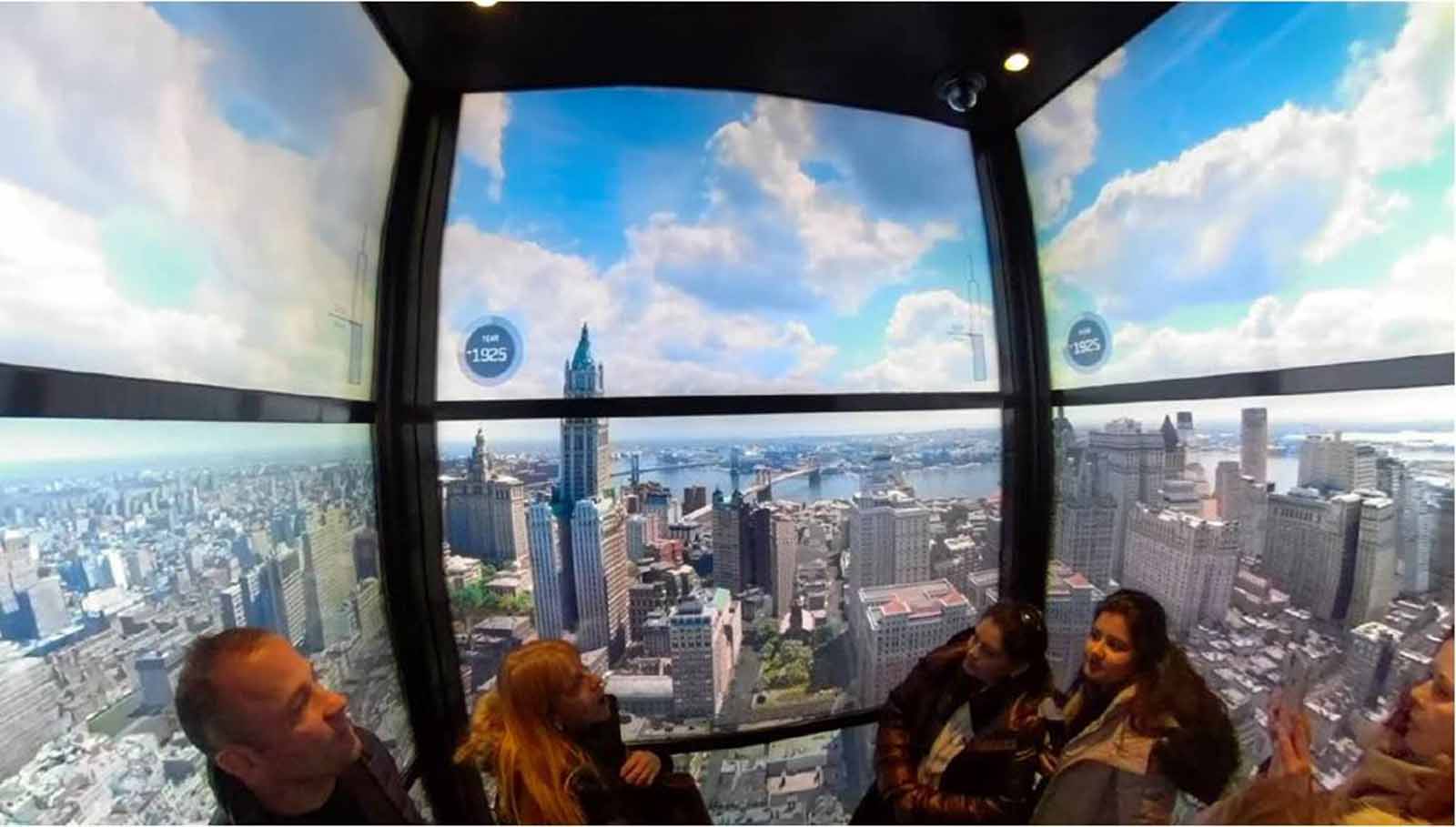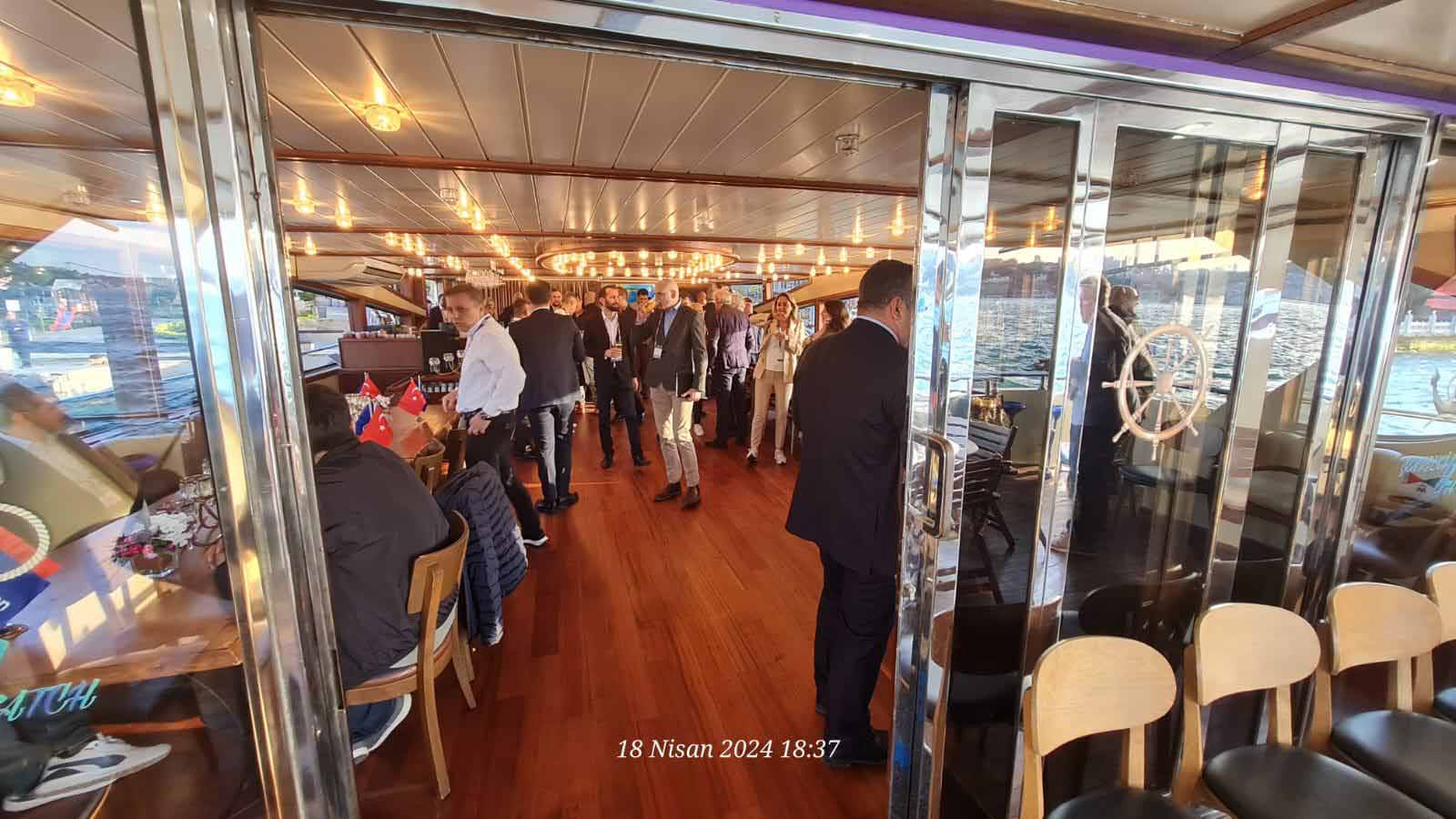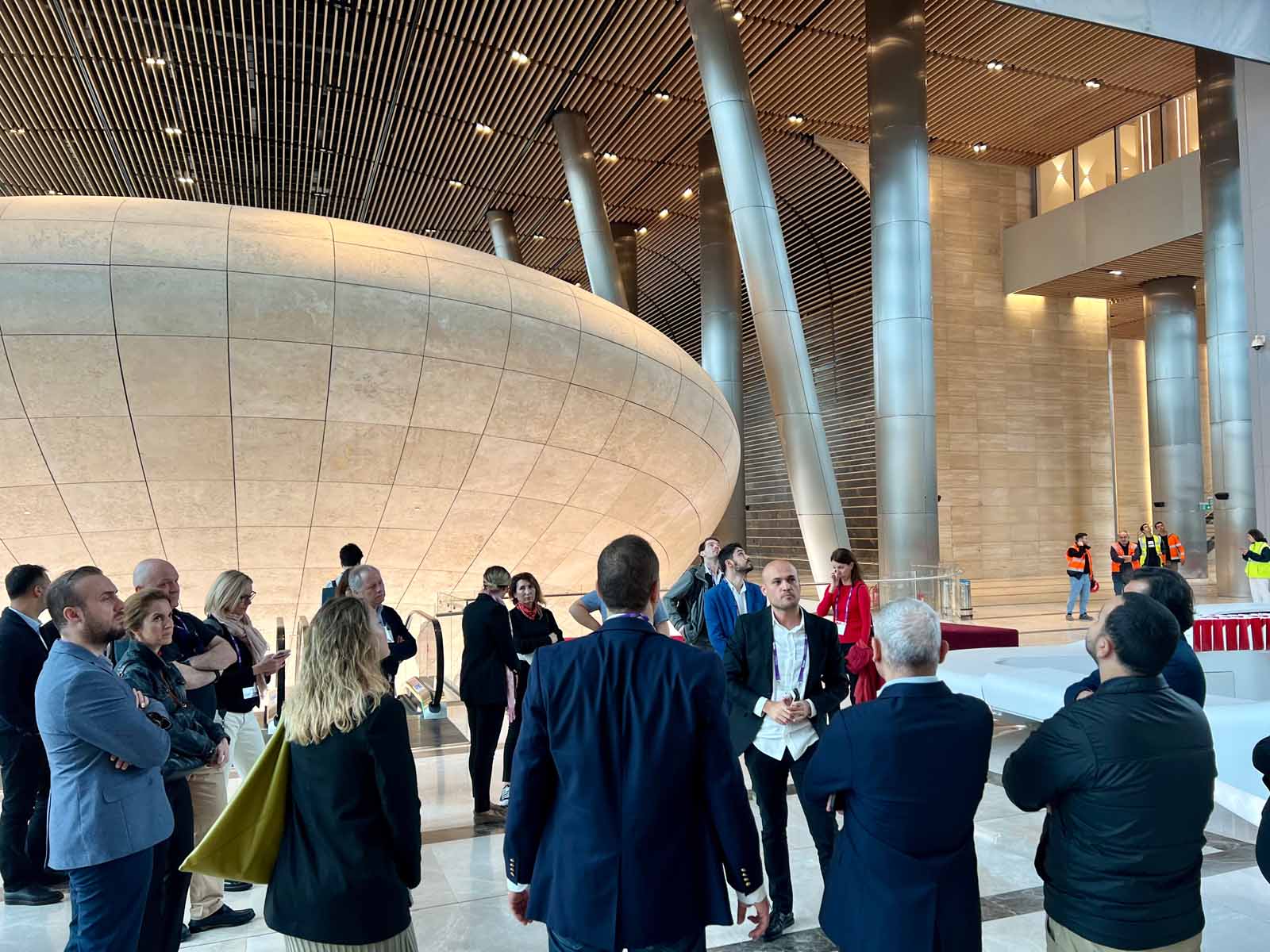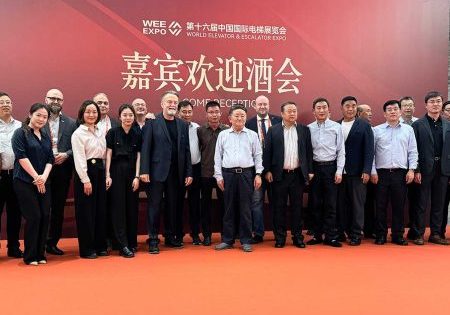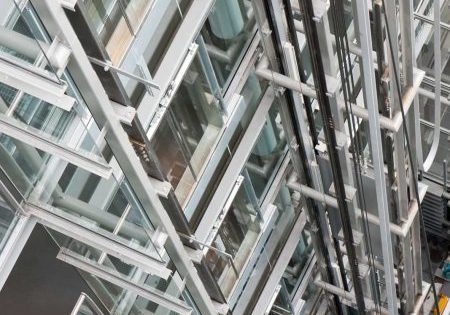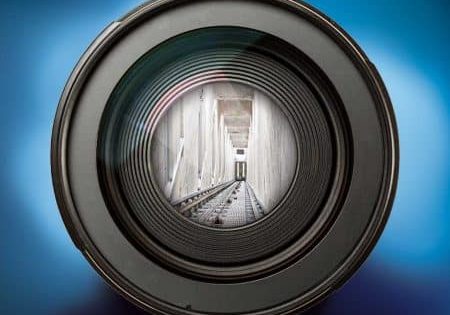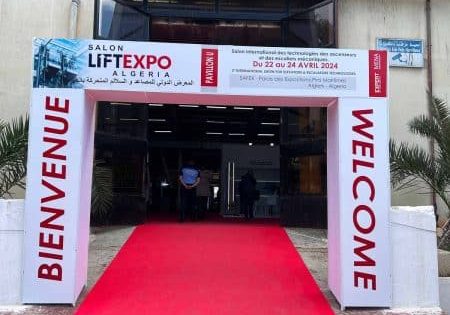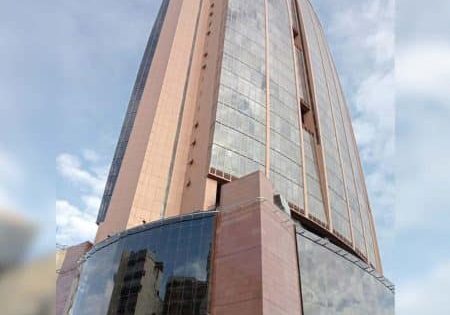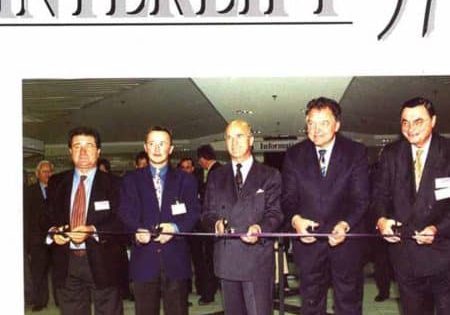The Council on Tall Buildings and Urban Habitat’s (CTBUH) European 2024 Conference took place on April 18 at the Ziraat Towers in the Istanbul Financial Center.
The flood disasters that have occurred in recent months in countries such as Kazakhstan, Pakistan and the United Arab Emirates serve as concrete indicators of how global climate change will impact human life in urban areas. Following this hot agenda, CTBUH Europe organized an event in Istanbul with the theme “Future-Fit Cities: Safer, Adaptive Density in a Changing Era” to explore the steps and opportunities needed to address the global climate crisis amidst increasing urban density and vertical construction in Europe.
The Ziraat Towers, designed by the international architecture company KPF (Kohn Pedersen Fox), consist of two tall towers, 40- and 46-stories high, inspired by the tughra symbol, showing respect for traditional architectural heritage. The Ziraat Towers, developed in accordance with LEED Gold certification standards, hosted the CTBUH Europe event in its specially designed stone-clad, magnificent auditorium, along with its atrium area. The auditorium hall, located next to the grand entrance of the atrium, has a seating capacity of 495 and showcases an architectural design reminiscent of gravel, covered entirely with 2,786 different sections of natural travertine stone. Similarly, its extraordinary interior design features 1,102 panels made of fire-resistant ayous wood.
For guests arriving early before the main conference, a tour was organized on April 17 at the Çamlıca Tower, one of Istanbul’s iconic structures.
The main conference took place on April 18 in the auditorium of the Ziraat Towers, hosting five different sessions with the world’s most distinguished professionals in the field of sustainability, including architects, urban planners, project developers and vertical-transportation (VT) experts.
For the second leg of the CTBUH Europe event, which was held for the first time in Frankfurt last year, Turner International, Ziraat Bank and Kalyon provided platinum sponsorship, while KONE and TKE from the VT sector contributed as Gold sponsors and Emlak Konut Asansör as a Silver sponsor.
Future-Fit Cities: Safer, Adaptive Density in a Changing Era
In the opening session, Mehmet Sami Kılıç and İlayda Öner from Turner, along with Shonn Mills, the General Manager of Whitby Wood, delivered welcome speeches. Following them, Peyami Ömer Özdilek, the General Manager of Ziraat GYO, took the podium to share general information about the Ziraat Towers.
After the opening speeches, Mustafa Chehabeddine from KPF delivered a detailed presentation, complete with visuals, on how the architecture of the Ziraat Towers, which hosted the event, was shaped by drawing inspiration from the Ottoman Tughra emblem.
The First Session: Panel on City Advocacy
The City Advocacy Program, recently launched by CTBUH, aims to identify and explore the fundamental issues, opportunities, and challenges faced by global cities today. These include density, climate resilience, social equity and accessibility. In this context, the first panel, moderated by Steve Watts, a Partner at Turner & Townsend Alinea, featured speakers from various global cities, including Anisa Mance from the Municipality of Tirana, urban planner and politician Mansoor Hussain from Norway, Peter Murray from NLA London and Özgür Bora Yaprak from the Istanbul Metropolitan Municipality. Moderator Watts emphasized the equal importance of buildings and infrastructure in creating sustainable cities, highlighting the need for a holistic approach, particularly in tall buildings. The speakers, who talked about various infrastructure and public transportation projects in their cities, also mentioned the measures taken in their respective cities against global climate change. Yaprak, speaking on behalf of the host city, mentioned the infrastructure projects carried out due to the immense size of Istanbul, including the pipeline laid from the Bulgarian border to meet the city’s water needs, solar panels to be installed in water basins to reduce evaporation from dams and meet the city’s renewable electricity needs, as well as projects for desalinating seawater.
The Second Session: “Preventing Threats to Cities and Buildings”
After the coffee break, the second session titled “Preventing Threats to Cities and Buildings” began, moderated by Katrin Förster from ABB Germany. The first presentation, titled “Lessons learned from high-rise building fires: adaptation codes and wood construction specifications,” was delivered by David den Boer from Peutz Netherlands. He shared information about fire safety engineering in the Netherlands, outlining the mandatory requirements for building design using various tables. Subsequently, Giulia Mancini from the Italian Studio Marco Piva explained in detail, with pictures and drawings, how the Torre Antonini building in Milan, the exterior façade of which was completely burned in the 2021 fire, was redesigned and implemented more functionally.
Following the Q&A session, Beyza Kasapoğlu from ALAN Architecture delivered a presentation titled “Digitalization of the Construction Sector as an Opportunity for Business and Sustainability.” The final presentation of the second session was delivered by Syed Rehan from Amazon Web Services (AWS) UK. He elaborated on additional security measures developed by AWS to counter cyber attacks, providing vivid examples.
The Third Session: “Mobility”
The final session of the morning, focusing on the lift and escalator sector, was moderated by Manuela Belova from Belova Architecture in Bulgaria. The first presentation titled “Shaping Evolution Trends and Optimized People Flow for Better Buildings” was delivered by Sascha Brozek, KONE’s head of Major Projects for Europe and Finland. Brozek stated that the way to accelerate the people flow in tall buildings is through Destination Control Systems, faster lifts and double-deck lifts.
The second presentation was given by Dalibor Savović from the British DeSimone Consultancy. In his presentation titled “Global Workplace Evolution: Impact on Elevator Design in a Tall Building,” Savović first presented statistics showing the increasing prevalence of working from home or hybrid working models after COVID-19. He mentioned that due to the decrease in office usage, the amount of office space required per person has also decreased.
Lastly, Javier Sesma, the vice president of Global Business Development at TKE Germany, delivered a presentation titled “Redefining Mobility for Resilient Cities of the Future.” Sesma stated, “With the United Nations forecasting that around 70% of the world’s population will live in cities by 2050, we aim to make cities better places to live in. Cities continue to grow in every corner of the planet, attracting talent and investment.” He then explained how hyper-connected and user-centric lift rides can be personalized.
Additionally, in his presentation, he showcased an intriguing video demonstrating the exhilarating experience of riding in a lift car equipped with LED screens. This lift, located at the World Trade Center in New York, is known as North America’s fastest.
The Fourth Session: “Density Adaptive to Natural Threats and Climate Change”
After a lunch break, the fourth session, moderated by Julia Köhler, commenced with a presentation by Louise Clarke from the British firm Buro Happold. Clarke provided information about integrated water planning, emphasizing details regarding access to fresh water resources and efficient use.
César Frías Enciso from the Spanish firm Morph discussed Spain’s approach to water management and the future plans on the issue. Enciso discussed how climate change, changes in seasonal rainfall, and evaporation will collectively affect global water availability. He also talked about the solutions developed from the past to the present to mitigate this issue.
Bjarne van der Drift from Dutch company Dam&Partners highlighted that some areas of the Netherlands lie below sea level, making it a delta country highly vulnerable to climate change. He elaborated on past and present flood mitigation measures implemented in the country to address the risk of flooding. Following that presentation, İlayda Öner from Turner Türkiye delivered a presentation titled “Density Adaptation to Natural Threats and Climate Change: Seismic”.
Patrick Coulombel from the French Emergency Architects Foundation elaborated on their solutions for addressing the permanent emergency reconstruction housing needs that arise after disasters, along with their global implementations. In his presentation, Coulombel shared striking information that 2.3 billion people around the world do not have access to fresh water sources, and that 97% of the buildings constructed globally are not designed by an architect.
Finally, Atila Zekioğlu from Degenkolb Engineers gave a presentation titled “Earthquake Resilience of Our Cities: Current Perspective and Achieving Better Outcomes”, where he presented issues at the regional, urban and building scales related to rising sea levels, droughts, extreme events and earthquakes, as well as the proposed solutions.
The Fifth Session: “Growing City Densities in Europe”
The CEO of CTBUH, Javier Quintana de Uña, who moderated the last session, underscored the importance of exploring the future of vertical urban living together with international participants at the CTBUH 2024 Europe Conference in Istanbul. Uña stated, “In this dynamic meeting with industry experts, we had the opportunity to delve into ways to make our cities safer with pioneering designs and sustainable solutions. This event, which is a potential convergence point for innovation and inspiration, provided an opportunity to explore the evolution of urban density, from groundbreaking architecture to future-fit urban landscapes”.
The first speaker of the last session was Oleksandra Azarkhina, Ukraine’s Deputy Minister for Infrastructure. Connecting to the conference room online, Azarkhina first provided an overview of the current situation in the country due to the war and then discussed the measures taken for reconstruction. Additionally, she discussed the establishment and management of the transformative digital platform called the Digital Restoration Ecosystem for Accountable Management (DREAM). This platform has overseen infrastructure projects in Ukraine with unprecedented efficiency and transparency.
Following that, Anna Kamenets from Archimatika Architecture in Ukraine highlighted prominent projects they have undertaken both in Ukraine and around the world.
The last presentation of the day was delivered by architect Stavros Gargaretas from Albania. In his presentation, Gargaretas discussed the restoration of historic buildings dating back to the Soviet era in the capital city of Tirana, as well as the design of new projects such as boulevards, the European Trade Center, and landmarks like the Eye of Tirana.
For the evening dinner, CTBUH Europe guests gathered on a boat for the unique Bosphorus view of Istanbul. During the Bosphorus tour, guests had the opportunity to chat and socialize while also enjoying the delicious dishes of Turkish cuisine.
The next day, guests had the option to participate in one of the concurrent programs, choosing between the Çamlıca Tower, Ziraat Towers or the Seismic Working Group based on their preference.
Get more of Elevator World. Sign up for our free e-newsletter.

